9 Polyphenol-Rich Foods (and Drinks)—Plus Healthy Ways to Eat More of Them
These powerful plant compounds come from a variety of healthy things—including cocoa, berries, and even your morning coffee.
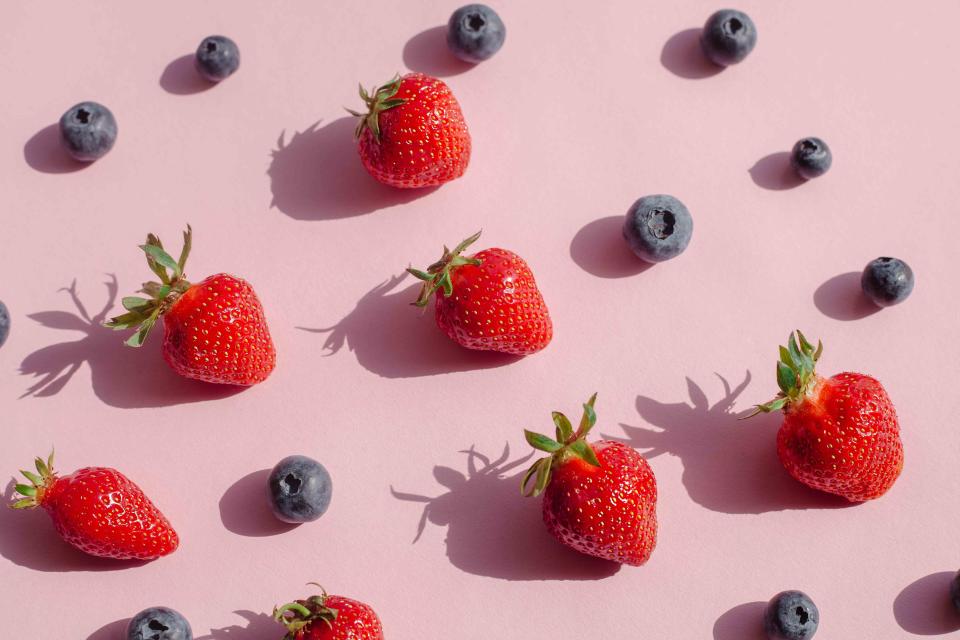
Anna Blazhuk/Getty Images
Often when considering the nutritional value of a certain food, we immediately turn our attention to what macronutrients (carbohydrates, fat, and protein) and micronutrients (those we need in smaller quantities, such as vitamins and minerals) it contains. But when it comes to plant foods, their nutrition goes even deeper—much deeper—mainly because plant foods are rich in polyphenols. What are polyphenols, and why are they so good for us? Where can you find them? Read all about it here.
Related:7 Anti-Inflammatory Foods to Eat Every Day for Long-Term Health
What are polyphenols?
Polyphenols—also commonly called plant compounds, phytochemicals, phenolic compounds, and plant chemicals—are a class of compounds only found in plant-based foods.
Polyphenols are technically considered micronutrients, and there are an astounding 8,000 known polyphenols (so far). Because of this, they’re broken down into classes and subclasses based on their chemical structures. Generally, polyphenols are categorized into two main classes: flavonoids, the most abundant in the diet, and non-flavonoids, encompassing phenolic acids, lignans, and stilbenes.
Within these classes are subclasses, including flavonols, anthocyanidins, and isoflavones. Then even within these subclasses, you’ll find individual plant compounds like quercetin, kaempferol, resveratrol, catechins, tannins, and ferulic acid.
Note: While carotenoids like lutein, zeaxanthin, beta-carotene, and lycopene are plant chemicals and typically grouped into similar discussions, they’re technically plant pigments, and not polyphenols, so won’t be included here.
Related:The 12 Healthiest Fruits To Eat, According to the Pros
The Health Benefits of Polyphenols
Don't let all this science talk intimidate you—you don’t need a degree in biochemistry to understand just how good polyphenols are for your health.
All polyphenols are powerful antioxidants.
Every phytochemical will serve as an antioxidant in the body, offering powerful anti-inflammatory benefits and targeting free radicals. Free radicals are oxidative (hence polyphenols being antioxidants) molecules that are the root cause of so many ailments we experience throughout life. These can range anywhere from aging-related concerns, like stubborn wrinkles and loss of eyesight acuity, to serious disease and medical conditions, like cancer, heart disease, neurodegenerative conditions, diabetes, and more.
They're anti-inflammatory and help prevent and protect against disease.
Beyond their antioxidant power, polyphenols have been well-researched in relation to almost every health concern you can think of. Studies have shown plant compounds to be associated with improved eye, oral, and gut health. Plus, evidence also hints that these powerful plant chemicals are effective in the prevention and treatment of cancer, diabetes, and heart, liver, kidney, and neurodegenerative diseases. You really can’t go wrong with these magical, often-forgotten, micronutrients.
Related:What to Eat for a Longer Life and Lasting Health
How many polyphenols do you need per day?
Consuming one to two grams of polyphenols per day is ideal to help prevent chronic illness. But who wants another number to keep track of every day? Every single plant-based food will contain at least some amount of plant compounds, so you don’t have to worry too much about choosing the perfect phytonutrient-rich food. As long as you’re consuming several sources of plant-based foods per day, including some particularly polyphenol-rich foods (see below), you should be good to go.
Related:How to Eat a Balanced Diet Without Restricting Your Guilty Pleasures
Foods Rich in Polyphenols
Spices
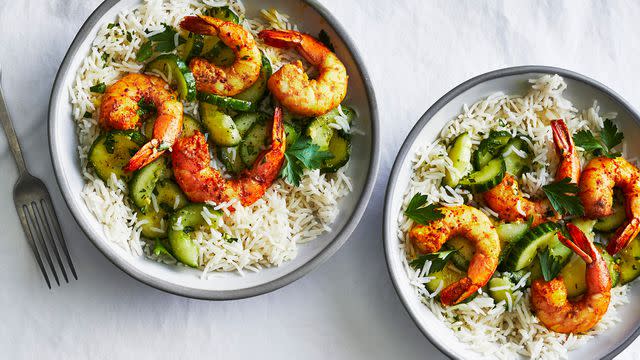
:Indian-Spiced Shrimp With Cucumber Salad
While many consider spices to be merely flavoring agents in recipes, these pungent ingredients are packed with beneficial nutrients—especially polyphenols. In fact, cloves are one of the richest sources of polyphenols you can find, with a massive 15.1 grams (g) per 100 g of this spice. For the same amount, star anise boasts 5.5 g, celery seed 2.1 g, and curry powder 0.3 grams.
Related:5 Spices You're Probably Not Using But Should Be, According to Professional Chefs
Herbs
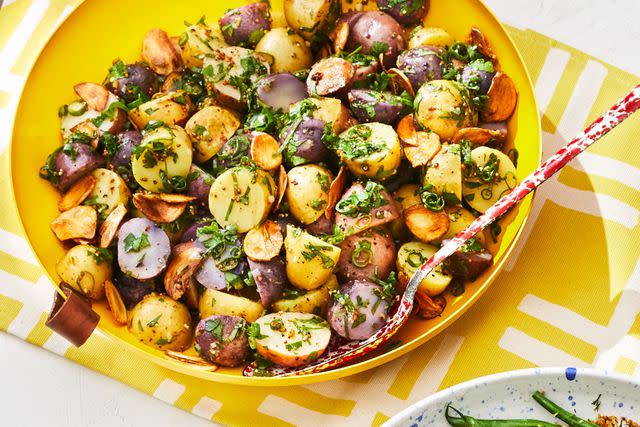
Similar to spices, herbs also don’t get enough nutritional credit. So many of our favorite leafy, aromatic seasonings are impressively high in plant compounds. In 100 g, peppermint offers a staggering 12 g of polyphenols, while Mexican oregano contains 2.3 g, sage 1.2 g, rosemary 1 g, thyme 0.9 g…you get the picture. So use up those herbs! Don’t let them go to waste: If you’ve had enough herb garnishes (is that even possible?), whirl them into fragrant pesto or chimichurri sauce, toss them with rice or potatoes, make herby dips, blend up glorious green goddess dressing, or use for savory marinades.
Cocoa

As if you needed another reason to love chocolate, cocoa is very rich in polyphenols, with 3.4 g in 100 g of cocoa powder and 1.7 g in the same amount of dark chocolate. Whether you bake with it, make your own hot cocoa, or simply enjoy a piece of rich, dark chocolate after dinner, there’s no shortage of ways to savor this delectable favorite. Keep in mind that the darker the chocolate, the richer in phenolic compounds.
Nut and Seeds
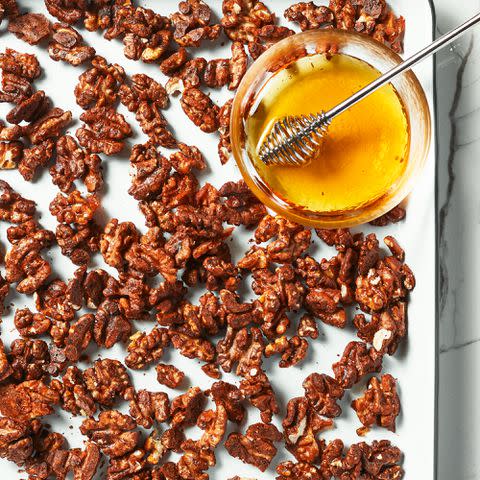
Beyond being the best crunchy afternoon snack, nuts and seeds are loaded with fiber, healthy fats, vitamins, minerals, and loads of plant compounds. Flaxseed boasts 1.5 g per 100 g, while chestnuts provide 1.2 g, and hazelnuts and pecans measure in at 0.5 grams. These options are also a great way to start your day—excellent for mixing into or topping oatmeal, yogurt, waffles, and smoothie bowls.
Related:7 Reasons Walnuts Should Be Your Healthy, Go-to Snack
Berries
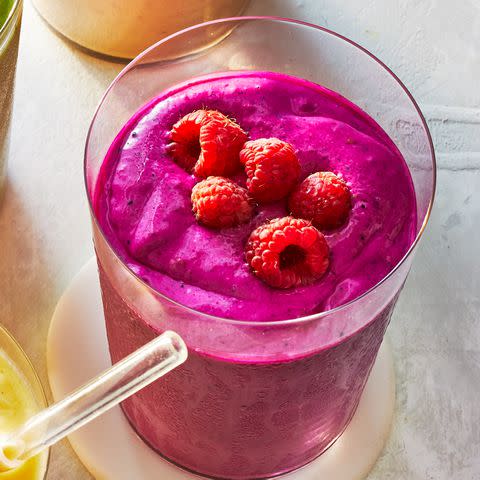
Berries are infamous for being incredible sources of plant compounds like polyphenols, and robust data back it up. In 100 grams, elderberry contains 1.8 g, blueberry 0.8 g, black currant 0.8 g, blackberry 0.3 g, strawberry 0.2 g, and raspberry 0.2 g. These berries lend so nicely to yummy superfood jams, baked goods, breakfast foods, salads, and more.
Plums

While plums and their dried counterpart, prunes, aren’t always the first fruits people reach for, they seriously deliver on flavor, can support healthy digestion, and offer tons of micronutrients, including phytochemicals. You’ll find a noteworthy 0.4 g of polyphenols per 100 grams of fresh plums.
Cherries

:Cherry Berry Breakfast Custard
Who doesn’t love cherries? These summer favorites taking up residence on countless countertops all season long are not only irresistibly sweet, but chock-full of polyphenols. In 100 g of cherries you’ll get 0.3 g of powerful phytonutrients.
And don't sleep on cherries as a savory recipe ingredient. Case in point: these Skillet Chicken Thighs With Fresh Cherry Salsa, Cherry-Bourbon Chicken Wings, Sour Cherry Vinaigrette, and Pork Chops With Cherry Sauce.
Related:5 Terrific Ways Tart Cherries Can Boost Your Health
Artichokes

:Secretly Healthy Artichoke Dip
While all veggies, including broccoli, kale, spinach, lettuce, carrots, and tomatoes, contain polyphenols, artichokes come out as the veggie on top when it comes to polyphenols They offer 0.3 g per 100 g, giving you another reason to start learning how to cook artichokes and use more of them in everything from cheesy pasta bakes to hearty dressings.
Tea and Coffee

Finally, we have our classic morning pick-me-ups, coffee and tea. Beyond giving you the jolt you need to get going, both of these comforting beverages are packed with plant chemicals. Coffee offers us 0.2 g per 100 milliliters, and green and black tea boast 0.1 g in the same amount.
Related:Coffee vs. Tea: Which One Is Better for You?
For more Real Simple news, make sure to sign up for our newsletter!
Read the original article on Real Simple.

